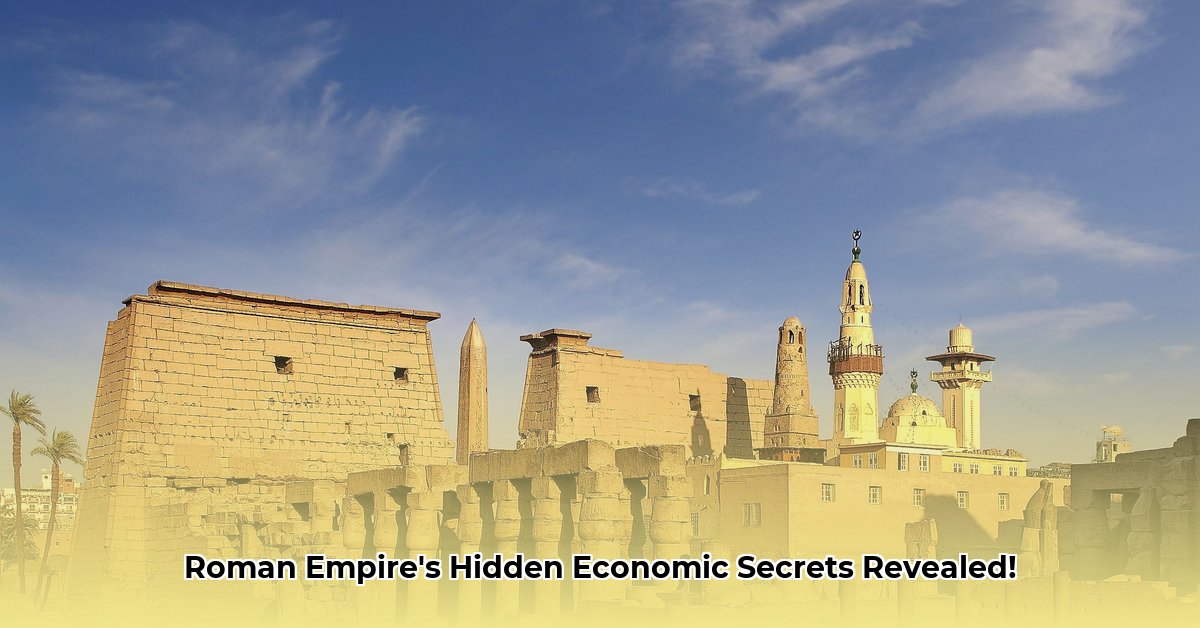Ever held a piece of currency and pondered its journey through history? Ancient Roman copper coins are more than forgotten pocket change; they are tangible echoes of an empire’s economic might, its political machinations, and the daily lives of its people. These small, often humble, artifacts reveal a captivating narrative of Rome’s earliest monetary systems, how emperors asserted their formidable power, and the profound, often perilous, consequences of tampering with a currency’s inherent value. Embark on a journey back in time to explore the intricate Roman monetary system, its enduring global influence, and the subtle secrets hidden within these remarkable ancient copper coin Roman relics. Learn about Roman monetary history from its earliest days.
Rome’s Earliest Currency: From Unwieldy Bronze to Standardized Coinage
The genesis of Roman money diverged significantly from the earliest forms of exchange seen elsewhere. Initially, Rome relied on uncoined bronze, known as aes rude (rough bronze), valued purely by weight. This primitive system evolved into aes signatum (signed bronze), large, heavy bronze bars or ingots impressed with distinctive markings like an ox. These monumental pieces, sometimes weighing over a kilogram, served as a foundational, albeit cumbersome, form of currency, demonstrating an early attempt at standardization.
The true transformation to coinage, however, came later, around the 3rd century BCE, heavily influenced by the more sophisticated monetary practices of the Greek city-states, particularly those in Magna Graecia. The economic pressures of the Second Punic War, which demanded vast sums for military expenditure, ultimately compelled Rome to fully embrace a standardized coinage system. Early Roman Republican coins, often cast rather than struck, blended indigenous Roman designs—such as a two-headed Janus or the prow of a ship—with Greek-inspired techniques. These initial issues frequently depicted generalized mythical scenes or personifications of gods and goddesses, reflecting a “solid conservatism” in their imagery.
The Rise of Imperial Portraits and Propaganda
A revolutionary shift in coin imagery occurred with Julius Caesar, who broke tradition by placing his own portrait on circulating coinage in 44 BCE. While previous moneyers might feature deceased ancestors, Caesar’s bold move marked a pivotal moment, leveraging currency as an unprecedented tool for personal propaganda and widespread dissemination of his image. This innovative approach was swiftly adopted by his successors, transforming coins into miniature, ubiquitous billboards. Consequently, ancient copper coin Roman pieces, alongside their gold and silver counterparts, became potent instruments for emperors to project their authority, convey military victories, and ensure imperial recognition throughout the sprawling territories. It was, in essence, an ancient empire’s most effective form of mass media.
Copper’s Unsung Role: The Backbone of Daily Transactions
Within the Roman monetary hierarchy, various metals played distinct roles: gold for the elite and large transactions, silver for broader commerce, and crucially, copper, bronze, and orichalcum (a brass-like copper alloy) for everyday purchases. Copper was particularly fundamental for the early As coins, initially conceptualized as a pound of uncoined copper. This intrinsic value, however, became increasingly complex as the imperial government began the perilous practice of debasement—reducing the precious metal content of its coinage. Even ancient copper coin Roman pieces, though of lesser intrinsic value than gold or silver, were not immune from the economic manipulations that rippled through the entire system.
The Roman Empire’s insatiable demand for copper fueled extensive mining operations across its vast domain. One of the most significant was at Rio Tinto in Spain, a colossal deposit that supplied copper for millennia. Roman engineers developed sophisticated mining techniques, including the use of water wheels to drain deep shafts, reflecting the immense effort required to extract this essential metal. The availability of copper was directly linked to Roman expansion, with military campaigns often motivated by the search for new mineral wealth.
The Perilous Path of Debasement: A Recipe for Economic Chaos
The denarius, once the stable backbone of the Roman economy and composed of nearly pure silver, began an inexorable decline in purity and weight during Emperor Nero’s reign in 64 CE. This debasement, a state-sanctioned reduction of precious metal content, accelerated dramatically during periods of intense warfare and political turmoil, particularly during the tumultuous Crisis of the Third Century. The antoninianus, introduced by Emperor Caracalla as a “double denarius,” ironically never contained more than 1.6 times the silver of a single denarius, representing an immediate profit for the imperial mint but a severe shock to public trust. By the mid-3rd century, the silver content of the antoninianus plummeted to a mere 2%, making it virtually indistinguishable from a bronze coin.
Historians propose several interwoven theories for this pervasive debasement:
- Scarcity of Precious Metals: The Empire likely faced a depletion of its easily accessible silver and gold reserves, making it harder to mint coins with high purity.
- Persistent Trade Deficits: Rome often purchased more luxury goods and commodities from external regions, such as India, than it exported, leading to a continuous outflow of precious metals from the Mediterranean world.
- Urgent Government Financial Needs: The colossal expenses associated with maintaining an enormous army, financing numerous wars, constructing monumental public works, and sustaining a burgeoning imperial bureaucracy frequently outstripped tax revenues. Debasement offered a seemingly expedient, short-term fiscal solution.
Regardless of the precise contributing factors, debasement triggered devastating economic consequences. It fueled rampant hyperinflation, causing prices for essential goods and services to soar dramatically. This, in turn, severely eroded the purchasing power of citizens’ wages and savings, leading to a significant decline in real incomes for many. As debased coins flooded the market, a phenomenon famously described by Gresham’s Law (“Bad money drives out good money”) took hold: prudent citizens hoarded older, purer, more valuable coins, further exacerbating the circulation of depreciated currency and accelerating overall economic instability.
The Enduring Legacy of Roman Monetary Systems
The influence of Roman money extended far beyond the empire’s geographic and temporal boundaries. The Carolingian monetary system, which shaped medieval European currencies, drew direct inspiration from Roman paradigms. Even today, echoes of Roman coinage persist in modern currency names: the “dinar” derives from the denarius, the British “pound” from the Roman unit of weight libra, and the Spanish “peso” similarly translates from libra. The Roman tradition of employing coins for extensive political propaganda also left an indelible mark on subsequent societies, becoming a standard practice for rulers seeking to project their image and power.
Identifying Ancient Roman Copper Coins: A Numismatic Journey
Identifying an ancient copper coin Roman artifact requires careful observation and access to reliable numismatic resources. Follow these steps for a methodical approach:
- Gentle Cleaning: Begin by very carefully removing any loose dirt with a soft brush. Avoid all harsh chemicals, abrasive materials, or aggressive scrubbing, which can irreparably damage the coin’s surface (patina) and significantly diminish its historical and monetary value.
- Examine the Obverse (Front): Meticulously study the portrait. This is almost always an emperor, empress, or a key member of the imperial family. Look for distinctive facial features, hairstyles, and headwear (e.g., a radiate crown typically indicates an antoninianus).
- Decipher Inscriptions: Carefully transcribe any visible Latin inscriptions surrounding the portrait (obverse legend) and on the reverse. These legends often include the emperor’s name, official titles (such as IMP for Imperator, CAES for Caesar, AVG for Augustus), and sometimes a date or mint mark. These are crucial for precise identification.
- Analyze the Reverse (Back): Examine the image depicted on the coin’s reverse. Common reverse designs include various Roman gods and goddesses, personifications of virtues (e.g., Victoria for victory, Providentia for foresight), military scenes, architectural structures, or allegorical figures. The reverse legend often explains the image or an associated achievement.
- Determine Coin Type and Metal: Based on its size, weight, composition (copper, bronze, silvered bronze), and overall design, attempt to determine the specific coin type (e.g., As, Dupondius, Sestertius, Follis, Quadrans).
- Assess Condition: Objectively evaluate the coin’s state of preservation. Factors like wear, corrosion, and clarity of details significantly impact its authenticity and market value.
- Consult Numismatic References: Utilize reputable numismatic reference books (like the Roman Imperial Coinage series), comprehensive online catalogs, and extensive academic databases. Compare your coin to verified examples, paying close attention to variants and rarity.
- Seek Expert Authentication: If you remain uncertain about the precise identification, historical significance, or true value of your coin, it is highly advisable to consult with a professional numismatist or an experienced coin dealer. They can provide expert authentication and specialized guidance.
| Coin Type | Primary Metal | Relative Value (Historical) | Key Characteristics & Imagery |
|---|---|---|---|
| As | Copper/Bronze | Low | Early, cast coins; Janus, ship prow; later, gods |
| Quadrans | Bronze | Very Low | Smallest denomination, daily pocket change |
| Dupondius | Bronze/Orichalcum | Low-Medium | Similar to As in size; often radiate crown |
| Sestertius | Bronze/Orichalcum | Medium | Large, artistic; detailed imperial portraits |
| Denarius | Silver | Medium-High | Most famous, widespread; emperors, gods, legends |
| Antoninianus | Silvered Bronze | Medium | Radiate crown on emperor; debased double denarius |
| Aureus | Gold | High | Elite currency; emperors, imperial family, events |
| Solidus | Gold | High | Later imperial gold coin; very stable, pure |
The Profound Impact of Debasement on Roman Society
The subtle shimmer of a Roman coin, once a powerful symbol of imperial strength and widespread prosperity, can actually narrate a compelling tale of profound economic turmoil. The continuous practice of debasement, primarily implemented to alleviate immediate fiscal pressures, ultimately triggered rampant hyperinflation and severely eroded public trust in the currency. This insidious economic erosion progressively fragmented the cohesive Roman economy, leading to a weakened military and directly contributing to widespread political instability throughout the empire.
The Unraveling of the Roman Economy
Imagine the complexities of managing a vast empire where expenses are relentlessly skyrocketing. Wars, ambitious public works projects, and lavish imperial lifestyles—all contributed significantly to the colossal financial burden. The seemingly tempting, albeit perilous, solution that emerged was to reduce the quantity of precious metal contained within coins while deceptively preserving their nominal face value. This insidious policy had immediate, destructive repercussions on the daily lives of ordinary Romans. Prices for essential goods and services soared dramatically; the intrinsic value of their hard-earned savings dwindled rapidly. The immense difficulty of attempting to purchase daily bread with coins that depreciated in value almost by the hour became a harsh reality. While Roman elites frequently conducted significant transactions in gold, thereby shielding themselves from the worst effects, the average citizen grappled intensely with an ever-depreciating silver and bronze coinage.
Debasement was not an exclusively economic concern; it precipitated profound social and political consequences throughout the Empire.
Consider these critical impacts:
- Weakened Military: To sustain the vital loyalty of their legions, emperors desperately required funds to pay their soldiers. Debasement offered a precarious short-term financial fix, yet a military that is poorly paid and inadequately equipped inevitably becomes a recipe for widespread disaster and internal revolt. This often led to soldiers demanding payment in purer metals or land, further depleting state resources and central authority.
- Fragmented Economy: As the public’s confidence in the central imperial currency plummeted, localized trade and barter systems proliferated. Regional economies became more self-sufficient and less reliant on imperial currency, thereby significantly weakening the empire’s overarching economic cohesion and centralized control. This undermined central tax collection and resource distribution.
- Political Instability: The severe economic woes directly fueled widespread social unrest, leading to riots, banditry, and a general breakdown of law and order. This contributed significantly to the gradual decline and eventual collapse of the Western Roman Empire by eroding the trust between the governing authority and its citizens, contributing to the “Crisis of the Third Century” and the rise of numerous ephemeral emperors.
Enduring Lessons for Contemporary Policy
The profound Roman experience offers invaluable and enduring lessons for contemporary economic policy formulation. The seductive allure of easily generated money through expansive monetary policies, or the reduction of currency value, can unleash severe and unpredictable consequences if not meticulously managed with prudence. The constant temptation to devalue a nation’s currency for immediate, short-term fiscal relief can inevitably lead to profound and protracted economic instability, while simultaneously eroding the critical public trust essential for a functioning economy.
Modern governments, investors, and businesses should meticulously scrutinize inflation metrics, closely monitor public sentiment regarding currency value, and carefully assess the long-term implications of their monetary policy decisions. Maintaining a fundamentally stable and credible monetary system is absolutely crucial for fostering enduring long-term prosperity and societal well-being. The Roman example unequivocally illustrates that true economic success is intrinsically dependent upon upholding the foundational social contract between the governing authority and its citizens.
Attempts at Reform: A Glimmer of Stability
Late Roman emperors, notably Diocletian (with his Edict on Maximum Prices in 301 CE) and Constantine the Great, embarked upon ambitious monetary reforms. Constantine introduced new, more intrinsically stable currencies such as the solidus, a pure gold coin struck at a consistent weight. These significant efforts aimed to painstakingly restore widespread confidence in the imperial monetary system. While the solidus became a standard for centuries, the cumulative damage inflicted by decades of unchecked debasement had already left an indelible mark on the broader economy and public psyche, proving difficult to fully reverse.
Roman Coinage as a Tool of Power: The Art of Imperial Propaganda
Imagine the Roman Empire as an expansive, pre-internet world, stretching across continents. How would an emperor effectively broadcast his directives, achievements, and desired image to millions of diverse people scattered across this immense territory? The ingenious answer, remarkably, lay directly within their pockets: how did Imperial copper coinage show power and function as a pervasive system of propaganda? These small metallic disks were not merely instruments of economic exchange; they functioned as highly effective miniature billboards, meticulously crafted to project the emperor’s desired public image and communicate his official policies.
Every single time a citizen conducted a transaction, they were, in essence, actively consuming and internalizing imperial propaganda. This was a remarkably clever strategy for ancient times, ensuring that even the most remote corners of the empire were constantly reminded of the emperor’s authority and achievements.
The Art of Persuasion on a Miniature Canvas
Roman emperors possessed a keen, almost intuitive, understanding of the profound power inherent in visual communication. They masterfully utilized coins to achieve several strategic objectives:
- Showcasing Military Victories: Coins frequently depicted vivid scenes of military conquest and triumph, such as captured barbarians, victorious legions, or personifications of victory, powerfully reinforcing the emperor’s martial prowess and solidifying his public image as an invincible and capable leader. Philip the Arab, for instance, issued coins proclaiming peace with Persia, even when Rome had suffered a humiliating defeat.
- Legitimizing Rule and Dynastic Succession: With the continuous circulation of every new coin, the emperor’s distinctive portrait served as a constant visual reminder of his inherent authority and legitimate lineage. Emperors from Augustus onwards frequently depicted heirs apparent or other family members to reinforce dynastic legitimacy. This strategy was crucial for cultivating a pervasive sense of stability and established order throughout the empire.
- Promoting Loyalty and Allegiance: Inscriptions and carefully chosen symbols on coins actively encouraged unwavering allegiance to the sprawling empire and its supreme ruler. Consider this an early, sophisticated form of imperial branding, designed to foster a powerful sense of unity and shared identity among diverse populations. Themes like “Fides Exercitus” (Loyalty of the Army) or “Concordia Augustorum” (Harmony of the Emperors) were common.
- Projecting Divine Favor and Virtues: Emperors frequently associated themselves with specific deities (e.g., Venus for Julius Caesar, Hercules for Commodus) or personifications of virtues (e.g., Fides for Loyalty, Pax for Peace, Salus for Health). This elevated the emperor’s status beyond mortal, linking his rule to divine will or essential societal values.
For instance, an emperor might strategically issue coins commemorating a pivotal military campaign, depicting himself as a triumphant and victorious general. Alternatively, he might highlight significant public works projects on coinage to conspicuously showcase his deep commitment to the welfare and prosperity of the Roman people, demonstrating his Pietas (piety/duty) and Liberalitas (generosity).
Evolving Messages for a Changing Empire
The brilliance of this imperial propaganda system lay in its remarkable adaptability. As the Roman Empire continuously evolved and transformed, so too did the specific messages conveyed on its coinage. Under emperors like Hadrian, for example, the thematic emphasis subtly shifted from overt military might towards the promotion of civil virtues, cultural unity, and architectural achievements, reflecting a period of consolidation. Later, particularly from the time of Diocletian and Constantine, the imagery became more generalized, focusing on abstract concepts like “Glory of Rome” or “Spirit of the Romans,” and eventually incorporated Christian symbols like the Christogram, signaling a profound and transformative shift in the empire’s fundamental religious and political landscape.
Roman copper coins were demonstrably more than mere instruments of economic exchange. They were exceptionally powerful tools of imperial propaganda, ingeniously employed by emperors to shape public opinion, unequivocally legitimize their rule, and project an unassailable image of strength and enduring stability. These small, yet influential, pieces of metal offer a captivating and insightful window into the complex political and social dynamics of the Roman Empire, revealing the subtle yet pervasive methods through which power was effectively exercised and meticulously maintained across vast distances and diverse populations. They served as silent, ubiquitous ambassadors of imperial ideology – perpetually circulating, constantly influencing, and eternally leaving their mark on the minds of the Roman populace.










